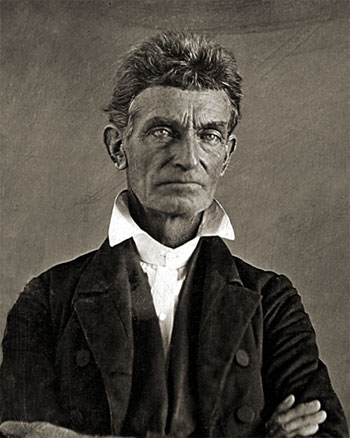

 Watch the following video on John Brown's raid.
Watch the following video on John Brown's raid. ![]() John Brown
John Brown
After watching the video, in your notes, summarize how the North and the South reacted to John Brown. Then write your own opinion. Should he be more remembered as an abolitionist who did all he could to fight slavery or as a dangerous terrorist?
Famous writers Herman Melville, Ralph Waldo Emerson, and Walt Whitman would all refer to Brown as a "meteor" of the coming conflict. Frederick Douglass hailed the sacrifice of Brown. Republican candidate for president, Abraham Lincoln, tried to distance himself from Brown's extremism, saying that regardless of intent, he needed to be punished under the law.
The South, on the other hand, was greatly alarmed by Brown's raid. They were scared and terrorized by Brown's actions. In states like South Carolina, there were more slaves than white people. Therefore, they reacted to him by strengthening their defenses. They immediately moved to secure their arsenals and be on watch against future slave rebellions. When war ultimately came, Harper's Ferry served as a Southern rallying cry.
→ Analysis: Examine the painting to the right entitled "The Last Moments of John Brown." Does it represent the Northern or Southern view of Brown? Explain with reference to specific aspects of the painting. Also, why is Brown surrounded by people wearing blue uniforms, when the color of the South was gray?
Interactive popup. Assistance may be required. The painting definitely represents the Northern view. It shows Brown as a savior of African Americans, kissing a young black child being held by his mother as he is lead to his death. Notice too that Brown's skin color is slightly darker than his portrait above might suggest, further linking the two. This shows Brown as a martyr for his cause. Brown was executed before the Civil War begins so everyone was still in the army of the United States, including Col. Robert E. Lee, who led the counter-attack that ended his rebellion.
Brown became a Northern rallying cry as well. A popular song emerged in 1861, "John Brown's Body" that Union troops would sing on their way to battle. You may recognize the tune as The Battle Hymn of the Republic, which is also a Union song from the Civil War.
![]() To listen to folk singer Pete Seeger perform "John Brown's Body," watch the video below:
To listen to folk singer Pete Seeger perform "John Brown's Body," watch the video below:
Source: Westernpanorama, YouTube
Sources of images used for this section as they appear, top to bottom: